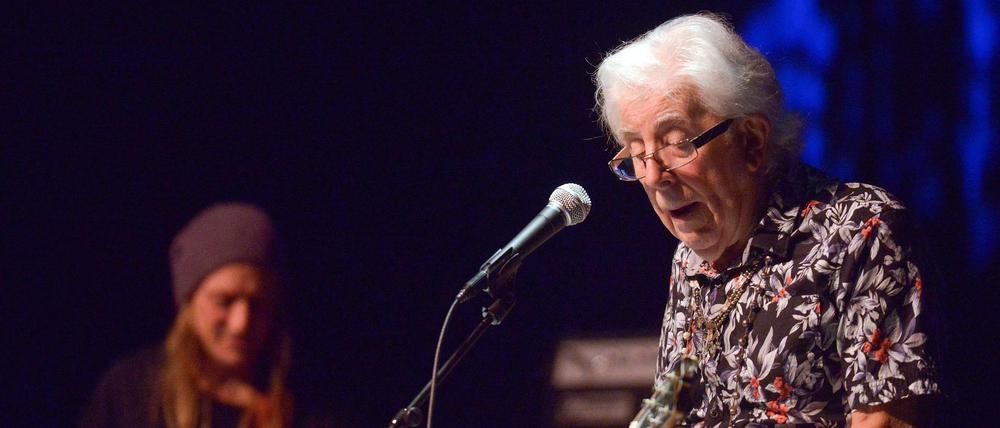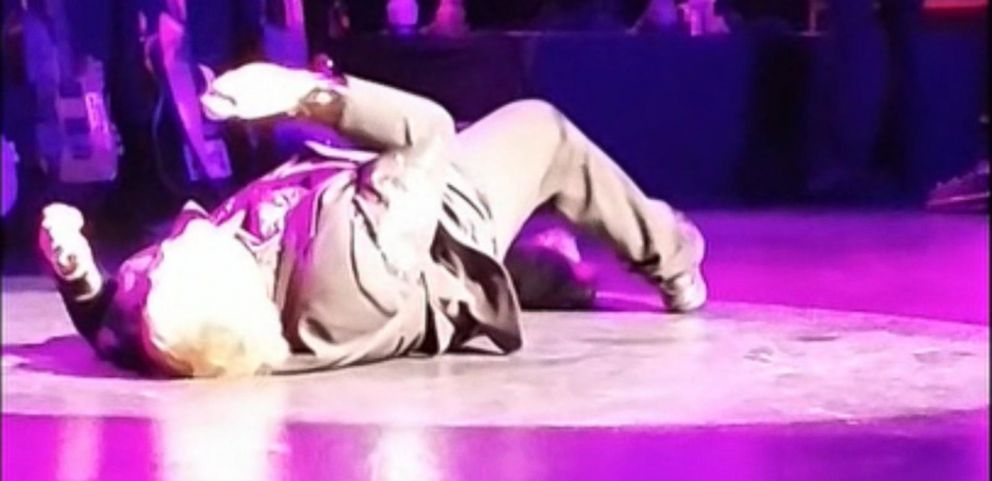
John Mayall helped launch the Rock & Roll Hall of Fame careers of many guitar players

CLEVELAND, Ohio – John Mayall, who died on July 22 at the age of 90 and will be inducted into the Rock & Roll Hall of Fame in October, was a rock ‘n’ roll Renaissance man and the connective tissue that held together much of the influential British blues rock scene of the 1960s and ‘70s. He was a prime mentor and an inspiration to several generations of musicians and rock stars, including Eric Clapton, Mick Taylor and Peter Green, all of whom spent portions of their early years playing in Mayall’s legendary Bluesbreakers.
Mayall — a multi-instrumentalist who played guitar, keyboards and harmonica — picked up his dedication to the blues as a teen entranced by the records of iconic blues artists such as Big Bill Broonzy, Blind Lemon Jefferson and boogie-woogie pianist Meade Lux Lewis. He founded the Bluesbreakers in 1963, but the blues were not terribly popular in the UK at the time. and the band didn’t really hit until it’s 1966 debut studio album. “Blues Breakers,” prominently featuring Clapton.
John Mayall, the Godfather of British Blues, has passed away. A singer, songwriter, and multi-instrumentalist, Mayall was a central player in the 1960s British blues scene that birthed groups like the Rolling Stones, the Animals, and the Yardbirds. Originally from the Northwest of England, he rose to fame leading long-running London outfit the Bluesbreakers, whose pioneering blues-rock sound introduced the world to several of rock’s biggest stars, including Eric Clapton, the Rolling Stones’ Mick Taylor, and Fleetwood Mac’s Mick Fleetwood, John McVie, and Peter Green.
Close collaborators remember him as a passionate and scholarly devotee of Black-American music who turned an entire generation of British musicians onto the blues, one of the cornerstones of rock music. “When you went around to John Mayall’s house, it was a shrine to the blues,” Fleetwood told Fairfax Media Australia in 2015. “He’d sit you down, almost like a school teacher, and he’d bring out this vinyl.” Clapton shared Fleetwood’s impression of Mayall as an eccentric mentor figure. “With long curly hair and a beard, which gave him a look not unlike Jesus, he had the air of a favourite schoolmaster, while still managing to be cool,” he wrote in his autobiography. “He didn’t drink and he was a health-food fanatic and the first proper vegetarian I had ever met.”
Inspired by the Chicago and Mississippi blues records he fell in love with as a teen, Mayall developed a distinctive songwriting style that was both heavily indebted to an American art form and uniquely British. A self-taught musician who sang in a Northern British accent and played guitar, piano, and harmonica, among other instruments, he released almost seventy albums across his 60-year career. In the 1960s and 1970s, his idiosyncratic take on the blues made him a fixture in the UK and US rock charts, most notably with his 1969 acoustic album The Turning Point, which was certified gold in the US.
Instead of sticking to traditional blues themes like unfaithful women or bad luck, Mayall distinguished himself by writing about the world around him. On “Nature’s Disappearing,” from 1970, he tackled pollution; on “Plan Your Revolution,” another track from that year, he sang about constructive political and social change. More recently, on “World Gone Crazy” from 2014, he explored the relationship between religious conflict and war. “The blues singer should sing songs about his own life,” he told The Guardian in 2014. “I’ve never thought the blues was a matter of copying other people. You’ve got to think about representing your own life in the music.”
Mayall remained something of a “musician’s musician” for most of his career, destined to be eclipsed in name recognition by artists who had graduated from his famed blues academy. “That’s been the story of my life,” he told ABC Radio in 2016. “I’m kind of an underground figure even today, and people haven’t really cottoned on in the general public.” That didn’t mean that his influence on rock and blues alike wasn’t profound. As The Guardian put it in 2014, “No Brit can be rightly called an institution in the history of the blues like John Mayall.”
The eldest of three children, John Brumwell Mayall was born in 1933 in Macclesfield, Cheshire, to parents Murray and Beryl Mayall. His father was a jazz aficionado and amateur musician who collected 78 rpm records and stringed instruments. At ten, inspired by British singer and wartime movie star George Formby, Mayall picked up a ukulele he found in the house and began teaching himself to play.
By the time he was fifteen, Mayall’s obsession with Formby had given way to an interest in Black-American boogie-woogie, a blues-based, piano-driven style of dance music that emerged in 1920s Texas. He began teaching himself to play blues songs on his family’s piano and using money he earned from a part-time job as a window dresser to purchase records by American artists like Lead Belly and Blind Lemon Jefferson. “My record collection reflected my obsession with the piano, and I rounded up any record that had the word ‘boogie’ in it,” he would recall in his 2019 autobiography, Blues From Laurel Canyon, which he wrote with Joel McIver.
After a stint in the British Army, where he played guitar in a ship band during a two-year assignment in Korea, he returned to Macclesfield and made his first recording, a direct-to-disc boogie-woogie piano tune he captured in someone’s front room. Over the next five years, he studied photography at Manchester’s Regional College of Art and played in a succession of local blues and jazz groups with names like the Blackfriars Society Jazz Band, the House of Sound, and the Powerhouse Four. Through a job as a concert photographer at Manchester’s Free Trade Hall, he continued expanding his network, at one point hosting a private performance by Tennessee country-blues musician Brownie McGhee, one of his idols, at his home.
In the early 1960s, Mayall was working as a typographer at an advertising agency when he became curious about a new sound that was sweeping London’s bar and club scene: Helmed by acts like Blues Incorporated and the Cyril Davis All Stars, it was a raucous fusion of rock & roll, jazz, and American rhythm and blues. When Blues Incorporated came to Manchester for a show in 1962, Mayall was struck that a British band could make music with such an authentic American feel. “I went home buzzing with ideas and ambitions,” he wrote in his autobiography.
Mayall wasn’t the only person who experienced the show as a revelation. Following the concert, he was approached by several like-minded local musicians about forming a new group, based on the idea of using American blues as its source material. The band ended up being called the Blues Syndicate, and Mayall, who sang and contributed piano and harmonica, became its creative nucleus, blending original songs he wrote with covers of authentic American blues songs. With the Beatles, from nearby Liverpool, just breaking on the UK music scene, it was an exciting time to be a young musician in the Northwest of England. “The Beatles paved the way for the next influential wave to hit America,” he wrote in his memoir. “England’s take on the blues.”
Eventually, Blues Syndicate played a show in Manchester opening for Blues Incorporated, whose line-up at the time included future Cream members Jack Bruce and Ginger Baker. After the show, frontman Alexis Korner encouraged Mayall to move to London. He relocated just a few weeks later, quickly forming a new band called John Mayall & The Bluesbreakers. After he settled on a stable line-up that included McVie, a bass player from West London, the group quickly became a fixture on the city’s R&B scene, which centered around hip nightspots like the Flamingo and the Marquee. “There was so much energy with people coming from all over the country to get their start in the London clubs and branch out from there,” Mayall told Ultimate Classic Rock in 2013. “You had The Animals from Newcastle and Spencer Davis and Steve Winwood from Birmingham… people came from all over.”
Before long, the Blues Syndicate had caught the attention of Decca, the storied London record company that was then home to the Rolling Stones. Though it would later be known as one of the musician’s signature songs, the group’s Mayall-penned first single for the label, “Crawling Up a Hill,” didn’t make too many waves upon its 1964 release — its high tempo blues progression and wailing harmonica notwithstanding. But the group’s profile continued to rise after a UK tour with American blues legend John Lee Hooker, who would become a lifelong friend of Mayall’s. “When you’re working with your heroes, it’s a great experience,” Mayall explained to the website pennyblackmusic in 2019. “You learn a lot from them about dynamics, without sitting down and talking about it, just by experiencing it alone.”
Leave a Reply